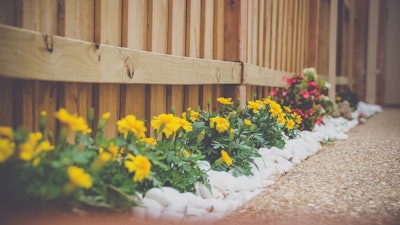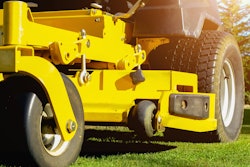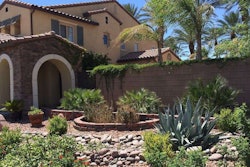
As a landscape designer, there’s no better feeling than watching a project unfold in front of your eyes.
While running a landscaping business can be a rewarding venture, there’s one challenge you’ll continually run into: clients that are hard to please.
You know what’s best, and you do your part in explaining this to your client. However, no matter how hard you try, you can’t get through to them.
On one side of things, you want to express your thoughts and share your knowledge to ensure that the job turns out as nicely as possible.
Conversely, you don’t want to put your clients off by pushing too hard. You need to find a happy medium, and that means learning how to communicate and set expectations early in the process.
Common landscape design mistakes
There’s no shortage of landscape design mistakes. The only good thing about this is that there are steps you can take up front to help your clients avoid trouble down the road.
One of the best things you can do is help your clients describe the landscape of their dreams.
With all this in mind, let’s review five of the most common landscape design mistakes, along with the best way to address them with hard to please clients.
1. Planting too close to your home
This is a beginner mistake that many homeowners don’t understand. They like the idea of putting bushes, trees and other design elements up against their home.
From their point of view, this is aesthetically pleasing and exactly what they want from a privacy perspective. However, you must explain the pitfalls of this approach.
For example, if a tree falls, it could damage the home’s siding, windows and roof. Not to mention the fact that it could fall on a powerline, thus resulting in an electrical hazard or fire.
2. Lack of irrigation
Regardless of your region, you know one thing to be true: most types of landscaping require water to survive. Yes, it’s an added expense—both upfront and for regular maintenance—but it’s critical to the long-term health of your client’s shrubs, trees, flowers and more.
Explain this by showing your client how much water each species needs to survive. From there, talk to them about how much time they’ll save through the installation of an irrigation system. Once your client realizes that they’ll be doing a lot of watering, they’ll come to realize that you’re just looking out for their best interests.
3. More is not always better
Some homeowners go overboard with their landscaping. They think that more is better, either because of how it looks or the privacy it provides (or both). Nothing could be further from the truth when it comes to landscape design. Less is often more, and that’s what you have to get across to your client.
For example, if a space is only big enough for one tree, there’s no point in planting two. It may look okay at first, but as the trees grow, it’ll become an eyesore. Furthermore, it can also cause damage, as noted above.
Give your clients several options in regard to the number of shrubs, trees and flowers you can plant. This will help them visualize the result.
4. Neglecting the front or backyard
It’s common to come across clients who don’t want to take on a landscaping project for their entire yard. Instead, they focus on either the front or back.
When budget is a concern, look for ways to stay on track while still giving attention to the entire yard. Talk to your client about how focusing only on one section of landscaping can hinder curb appeal.
Even when the budget is tight, there are ways to enhance visual appeal. Some ideas include the use of flowers, landscape rocks and decorative grass.
5. Neglecting smart home technology
Smart home technology is more popular today than ever before, and that holds true when it comes to the yard and garden. Some homeowners simply don’t want to get involved with smart home technology. While you have to respect their wishes, don’t hesitate to give them a quick overview of what they’re missing out on.
Smart home technology takes on many forms, ranging from privacy and security to lighting and irrigation.
For instance, a lack of irrigation (see above), is a common landscape mistake. Through the use of smart technology, homeowners may actually find it easy and enjoyable to water their lawn and garden.
Many homeowners don’t realize that this is what they want until they actually learn more about it. And it’s your job to provide as much information and guidance as you can. Once they realize this technology can save them time and money, they may become more receptive. And that’s especially true if you show them how easy it is to use this technology.
EDITOR’S NOTE: This article was written by Luke Smith. Smith is a writer and researcher turned blogger. Since finishing college, he is trying his hand at being a freelance writer. When he isn’t writing, you can find him traveling, hiking or gaming.









